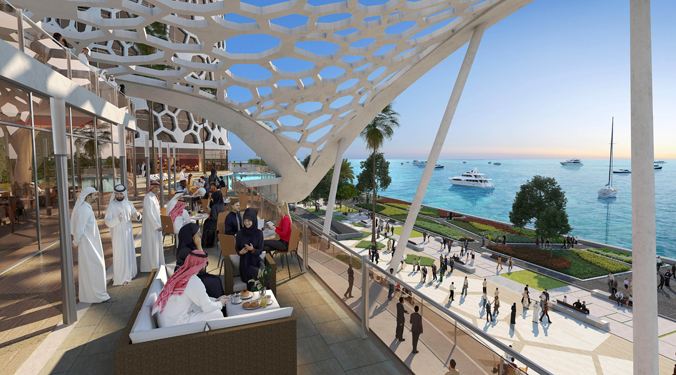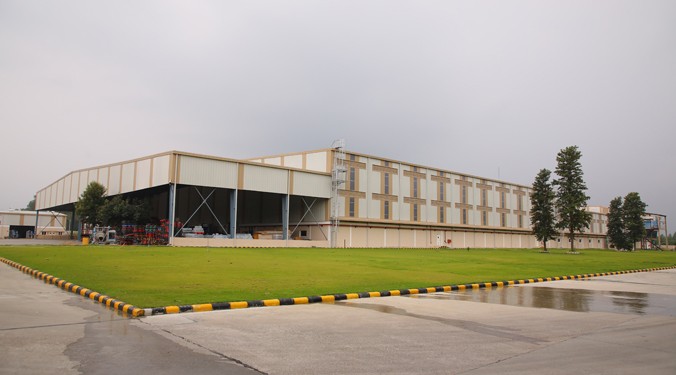Speeding up drilling in Hong Kong
Sandvik drill rigs have made light work of the incredibly hard granite, impressing operators and managers alike, helping to set new records and benchmarks
The enormous complexity around building the Hong Kong section of the Guangzhou-Shenzhen-Hong Kong Express Rail Link (XRL), with its underground West Kowloon Terminus (WKT) and 26-km underground rail corridor has resulted in delays to some of the contracts. After examining the entire project, the contractors have made a change in the specified excavation method to claw back some of the lost time and hit a revised operational date of late 2017. The Leighton-Gammon JV undertaking Contract 810A has switched from mechanical splitting of rock to a combination of mechanical and blasting techniques. WKT, when complete, will be one of the world’s largest underground railway stations, a four-level structure built to a depth of 30 metres, with a footprint of 11 hectares, 15 platforms, customs and immigration facilities, departure lounges and retail outlets.
A review of the entire project during Q2 2014 had concluded that combining the mechanical breaking of the rock with a drill and blast operation would lead to time-saving on the excavation. The decision to use explosives was made in the middle of the year, with the first blast taking place on the 22nd September 2014. Projections are that the final excavations will be completed by Q1 2016.
The drilling side of the project is being undertaken by 22 drill rigs supplied and maintained by Sandvik Construction.
One especially challenging area of the WKT works is the north top-down section where the 15 tracks merge towards the two running tunnels. This requires completion of a slab at first basement level to act as a solid strut between the completed diaphragm walls that surround the site. Excavation then continues below the slab. Two contractors are undertaking this part of the works under two separate contracts for the MTR Corporation, with the largest contract being 810A, awarded to the Leighton-Gammon joint venture. The JV will excavate 1.7 million cu.m. of earth, and placing 600,000 cu.m. of concrete and 150,000 tonnes of steel reinforcement.
Use of jumbo drilling rigs had already been considered by the JV at the beginning of the project, and discounted because of the lack of space. The JV had already decided on the use of Sandvik Ranger DX700 top-hammer drill rigs for the drill-and-split operation. They now decided on adding DQ500 units, plus one Dino DC400Ri unit, which have the capacity to match the demands of drill-and-blast along with the manoeuvrability to work between the support columns and under the restricted head height. Kenny Chen, Sales Manager for Sandvik Hong Kong, says that a peak deployment of the drill rigs will see a total of 22 units working underground which will comprise nine DQ500 units, one remote-controlled Dino DC400Ri, and a total of 12 Ranger DX700 or DX800 models. Francis Haden, Blasting Manager for the JV, said that he has never experienced granite as tough as that which has to be broken up and removed from the WKT excavation. He adds, “The granite is extremely tough, very competent, has a very high UCS, minimal jointing, and is very coarse grained. Once you get through the softer upper layers and into the bedrock, it is massive, flawless. On the western side of the excavation the joint sets are 17 metres apart.” Francis goes on to explain. “We are working on top of the rock, and the circumstances make this unlike any other blasting project that has been undertaken in Hong Kong.”
He also explains the importance of drilling flexibility. “When you are blasting a tunnel, you have a generally standard cross section on the tunnel face, and you drill to a set pattern. When you are quarry blasting, you are marking out your set volume. But here, we are essentially scalping the top of the rock heads to create flat, level benches. In order to get that level surface we have to drill holes of different lengths. So we might be drilling 1.2-metre deep, we might be going to 2.4-metre or 3.3-metre, and the holes can be fanned, or vertical, or horizontal. Drilling flexibility and the ability of the rigs to work their way into confined areas are therefore extremely important.”
This is where the DQ500 rigs come into their own, equipped with 48 mm A330 button bits proving themselves drilling the blasting holes. “We hadn’t worked with the DQ500 before, but Sandvik brought us a demonstration model and we could see that the articulation on the boom and the low profile were what we needed,” says Sean Warren. “In places where the DQ500 could not go, the Dino can be sent in on remote control. We have found this to be a very workable solution, because this is essentially for small-scale work and we can deploy the Dino quickly and with ease around what is a very congested site. In some places the steel structural support is spaced at only 6 m and so you have to have something that has a high degree of rotation.” DQ500 operator Tang Kin Hung says that the rigs are drilling a rectangular pattern with 0.5-metre spacing, and that an average of 500 holes is needed per shift. “We have no difficulty in meeting this target, despite the toughness of the granite,” he says. “Our only real problem is space and accessibility.” The Dino DC400Ri has proved to be perfect for this tricky work. Wong Ka Po is one of the operators assigned to the Dino DC400Ri. He is impressed. “The Dino works where the DQ500 cannot access,” he says. “This unit is fully remote controlled and is equipped with a 48 mm bit. We can send it close up against the structural elements and the retaining wall.” The blast holes are packed with 32 mm by 200 mm cartridges, with up to three being used in one hole in a method known as triple-deck blasting. The usual delivery to the site is 200 kg of explosive per day.
The Ranger DX700 and DX800 rigs are equipped with either 102 mm RT300 button bits or 127 mm RT330 button bits to drill the holes for the mechanical splitting operations. The drill bits are sent to the Sandvik depot after 60 m of drilling, where the buttons are reground. An electrolysis steel depletion machine is used to remove worn steel from around the carbide on the button bits before regrinding the buttons. “We need only place the bits into the machine’s salt solution and then run a low DC voltage through the solution,” says Service Representative Chiang Kwong Chuen. “There is no need to use any handheld grinding wheel on the bit, so that means there is no noise or dust, and it is also faster. We can also reclaim spent carbide from bits that we could no longer regrind. In this way we are sharpening each bit up to eight times, which is very cost-effective when you consider the toughness of the granite.”
Francis Haden says that the quota for the drilling and blasting operation is to break on average 200 m³ per day, and that the figure more usually achieved is 250 cu.m. Hence the advantages of drill and blast are becoming very apparent. “Mechanical splitting works but it is very plant intensive,” he says. “The drill and split team has the advantage in that they can begin work at 7am in the morning and because they have a Construction Noise Permit they can work as late 11 o’clock at night. Time-wise, compared with drill and blast, they have double the time that we have. We don’t receive our explosives until about mid-day, and we generally fire at 7 pm. We have a much smaller team than they have, and fewer drill rigs, and we have to drill more holes, although of smaller diameter. But even with the various constraints, the blasting team is still breaking comparable volumes of rock. As to how much progress is being made, Francis concludes, “We are certainly setting records and setting a new benchmark in what can be achieved with drill and blast here in Hong Kong.”
Cookie Consent
We use cookies to personalize your experience. By continuing to visit this website you agree to our Terms & Conditions, Privacy Policy and Cookie Policy.









